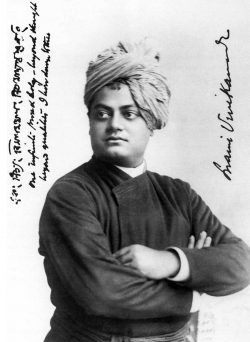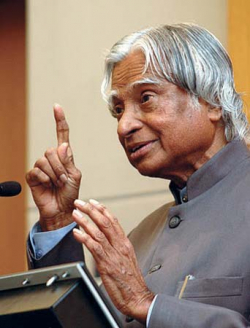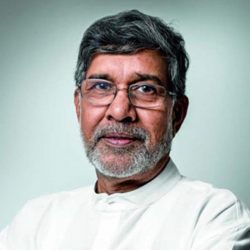Mathematics genius Srinivasa Ramanujan.
An equation means nothing to me unless it expresses a thought of God.
- Srinivasa Ramanujan
Srinivasa Ramanujan (Indian mathematician) was born on 22 December 1887 in a Brahmin Iyengar family in Erode, Madras Presidency (now Tamil Nadu, India).
His father, Kuppuswamy Srinivasa Iyengar & mother Komalatammal initially belonged from Thanjavur region. They resided in a neatly established housing at Kumbakonam.
From his childhood he memorized about ritual and puranas, vegetarian eating habits according to the Brahmin culture.
Early life and education.
At town primary school Ramanujan did well. Almost before turning 10, he passed his preliminary examinations in English, Tamil, geography and arithmetic with the decent scores in the district.
At the age of 11, he had completed the mathematical proficiency of college level. He triumphed a book written by S. L. Loney on advanced trigonometry by the age of 13 while excavating intricate theorems on his own.
He used to finish mathematical exams in half of the given duration and indicated an understanding with geometry and infinite series problem.
In 1904, Ramanujan was rewarded the K. Ranganatha Rao prize for mathematics by his Town School's headmaster.
On 14 July 1909, Ramanujan married Janaki.
In 1910, when Ramanujan was sick. He stressed for his condition and instructed his friend R. Radhakrishna Iyer to hand over his works to Professor Mudaliar of the Madras Christian College.
After Ramanujan regained his health he got back his notebooks from Iyer, he caught a train from Kumbakonam his home town to Villupuram, after attaining a research job at Madras University, Ramanujan shifted with his household to Triplicane.
Career in mathematics.
In 1910, Ramanujan came across deputy collector V. Ramaswamy Aiyer, illustrated him his mathematics notebooks Aiyer sent Ramanujan, with words of prelude to the district collector for Nellore & the secretary of the Indian Mathematical Society R. Ramachandra Rao.
Rao granted and took him to Madras. He proceeded his study with Rao's monetary support. With Aiyer's assistance, Ramanujan retained his endeavour publicized in the Journal of the Indian Mathematical Society
Ramanujan enlisted words to oversee mathematicians at Cambridge University.
The primary two professors, H. F. Baker and E. W. Hobson subsided Ramanujan's journals without testimony. On 16 January 1913, Ramanujan penned to G. H. Hardy. Appearing from a foreign land a mathematician, the nine sheets of mathematics formulated Hardy originally sight Ramanujan's papers as a feasible forgery later Hardy was also influenced by some of Ramanujan's other function connecting to infinite series.
On 8 February 1913 Hardy jotted down Ramanujan a letter affirming curiosity in his practice, reinforcing that it was "essential that I should see proofs of some of your assertions". Per his Brahmin upbringing, Ramanujan denied leaving his nation to "go to a foreign land". Hardy's parallelism with Ramanujan soured after Ramanujan denied to arrive in England. Hardy introduced a companion lecturing in Madras, E. H. Neville, to guide and take Ramanujan to England, later Ramanujan toured to England by vessel, putting his wife to live with his parents in India.
Next Read : Azim Premji: Central Indian Philanthropist.
Life in London
Ramanujan travelled from Madras aboard the S.S. Nevasa on 17 March 1914. Ramanujan soon started his work with Littlewood & Hardy.
He spent practically five years in Cambridge working together with Hardy and Littlewood and allocated a piece of his discoveries there. Hardy and Ramanujan had highly polar attitudes. Their complicity was a conflict of distinct lineages, opinions, and functioning methods.
Later he was given a Bachelor of Arts by Research degree in March 1916 for his function on highly composite numbers, the initial component of which was published as a journal in the London Mathematical Society.
On 6 December 1917, Ramanujan was voted to the London Mathematical society .
On 2 May 1918, he was ordained as a Fellow of the The Royal Society, he was the first Indian to be chosen a Fellow of Trinity College, Cambridge University
Illness & Death.
Ramanujan was afflicted by health difficulties throughout his existence. His health deteriorated in England; He was diagnosed with tuberculosis and a severe vitamin deficiency, and detained to a sanatorium for treatment. Perhaps he was also slightly resilient due to the problem of maintaining to the stringent dietary codes of his religion there and because of World War I in 1914-1918.
In 1919 he returned to hometown Kumbakonam, Madras Presidency, and in 1920 he deceased at the age of only 32. Thereupon his death Ramanujan's widow, Smt. Janaki Ammal, shifted to Bombay (Mumbai).
Recognitionn & popularity.
-
On the 125th anniversary of his birth, the government of India announced that 22 December will be observed every year as National Mathematics Day.
-
Ramanujan IT City is a tech city that was constructed in 2011. In Chennai
-
The Man Who Knew Infinity is a 2015 movie based on Kanigel's novel. British actor Dev Patel performs Ramanujan.
-
Ramanujan's birthplace state of Tamil Nadu dedicates 22 December as 'State IT Day'.
-
Ramanujan, an Indo-British confederation movie chronicling Ramanujan's life, was released in 2014 by the sovereign movie association camphor cinema. .
-
A Disappearing Number is a British theatre creation by the business Complicite that sifts the connection between Hardy and Ramanujan.
-
David Leavitt's book The Indian Clerk scrutinizes the incidents fulfilling Ramanujan's letter to Hardy.
-
Ramanujan was quoted in the 1997 movie Good Will Hunting
-
The trail swirls Ramanujan and his spontaneous finding into its story relating to theology, mathematics, finance and economics.
-
The stage play First-Class Man by Alter Ego Productions was established and deeply portrayed on David Freeman's First Class Man
-
Partition, a show by Ira Hauptman about Hardy and Ramanujan, was initially enacted in 2013.
Also Read : Education Policy 2020 is set to be a landmark in India’s history of education
Also Read : Changemaker Kailash Satyarthi.











Discussion